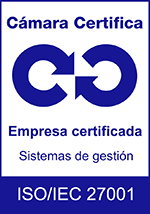4 must-have features for EHS Mobile Apps
A few years ago, EHS mobile applications were just beginning to be implemented. Today its use is more widespread. EHS mobile applications are in the early adoption stage and are well positioned to move into the early user growth stage.
There are many reasons why EHS mobile applications are popular, and almost all of the reasons share one of the following two underlying drivers:
- Empower users (e.g., to quickly enter data, receive real-time information, save time).
- Increase the amount of data reported, which provides more data on new hazards, risks and opportunities for improvement.
The EHS mobile applications are currently used for incident reports, audits and inspections, real-time safety alerts, access to chemical safety information (via online SDS or barcodes / QR codes), etc. Can you determine which of the EHS Apps to select from those on the market? In this publication, we provide four key attributes to consider as part of a selection process.
1) Native mobile applications
A native mobile application is a smartphone application developed and coded specifically for a mobile operating system, such as iOS or Android. Native mobile applications provide fast performance and high reliability. They also have access to a device’s functions, such as its camera, GPS and address book. In addition, some applications can be used without an Internet connection. The last part is important because offline functionality is required in some workplaces where there may be no Internet connection, such as a mine, offshore oil platform, etc.
Only a subset of EHS mobile applications are native applications. Other applications in the market are classified into the following types:
- Web application: a website designed to run on a mobile device, and usually written in HTML5. These are not really “apps,” but websites accessed through a browser on a smartphone or tablet.
- Hybrid application: as its name suggests, this application is part of the native application and part of the web application. It can take advantage of many device features, but not all, and still relies on a browser integrated into the application.
Native applications are better with respect to the use of device features, offline functionality, speed, user interface and their embedding. Ensure that EHS mobile applications are fully native rather than, for example, hybrid. The best way to distinguish between native and non-native applications is to request a demo or use the application yourself, and verify which of the smartphone’s built-in features (GPS, camera, etc.) can be used. This will allow you to notice the marked differences between native and non-native applications.
2) Field tested
EHS mobile applications, like any software, only get better with time. Think about the first versions of common applications (Windows, Office, Chrome) you used and compare them to their current versions. EHS mobile applications that have been around for many years are more robust and richer in functionality, especially if they were native from the beginning.
Some EHS mobile applications were not native in the initial versions, and native versions were developed only recently. These applications are not as field-proven as the EHS mobile applications that were first deployed years ago and were native from day one.
Offline functionality offers a great example of the value of being field-tested: EHS mobile applications that have been around for a few years offer more robust offline functionality than recently released applications.
3) Scalability to a large number of users
The goal of EHS mobile applications is to extend the reach of an EHS management system to all end users. This allows users to save time in their daily tasks and feel involved in a culture of safety, for example, by having critical safety information at hand, and being able to report near misses with just a few taps on their smartphones. The number of end users can reach into the thousands, so you must ensure that EHS mobile applications can scale to such a large number.
There are three things to keep in mind when evaluating EHS mobile apps for scalability: 1) Are they native applications? 2) Are they field-tested? 3) Are there case studies of global organizations with thousands of workers using EHS mobile applications? Articles n. ° 1 and n. 2 are explained above. Regarding item n. A good example is Lendlease and how the global leader in construction, infrastructure and real estate trained thousands of its employees through mobile solutions.
4) Acknowledged by an independent analyst company
With a wealth of information available on mobile EHS applications from various vendors, it is useful to obtain an evaluation from an independent, neutral research firm.
The Verdantix Green Quadrant EHS Software 2017 report is the gold standard for EHS software manufacturers due to its sophisticated and structured methodology, evidence-based assessment and objectivity. Compares 20 leading EHS software vendors by evaluating and rating each vendor on 173 functionality criteria. On pages 27 to 28 of the report, EHS software vendors receive a rating for the “Mobile Applications” criterion.
Look at all the ratings and take note of the suppliers with the highest scores. This will provide you with an objective assessment of the leading EHS mobile applications on the market.
The selection of any type of software has risks associated with it. By taking into account the four attributes described in this publication, you will mitigate the risk of selecting the wrong solution and ensure that you identify the right EHS mobile applications for your organization.
Want to improve EHS management in your organization through software? Download the Verdantix Green Quadrant EHS Software 2017 to learn more about market trends and compare the top 20 EHS software vendors.



